Mid January – Early February 2023
Last year, we’d traveled around northern parts of South America, including Colombia and Peru. This year, our goal was much farther south, eventually to Patagonia. But first, we’d stop in Buenos Aires. Any part of Argentina is a very long distance away from California. Our trip started with an hour and half drive to Sacramento where we took a three-hour flight to Dallas, where we waited for about two hours to board a comfortable Boeing 787. After ten more hours in the air, we landed in Buenos Aires where the time zone was five hours later than where we’d begun our day 16-and-a-half hours earlier. Sadly, neither of us sleep much on a plane and after clearing immigration, we took a long taxi ride from the airport and arrived at our tiny hotel mid-morning, exhausted
We were able to check into our room early at Le Petit Palais where our French host Gilles was waiting for us. Gilles was a nice enough guy but he loved rules and spent the first fifteen minutes instructing us to: Only wear his supplied cheap slippers anytime we were anywhere in the ancient inn other than the tiny entrance foyer; only open the old doors and windows with great care or we’d be paying a hefty price to fix them; and not leave cold drinks on the floors in case condensation might stain the old wood. Tired and not in the best mood for such a petty list of requirements, and just wanting to rest, we endured another few minutes of instruction on entering and exiting the property. No less than three different ancient keys were required to get in our room from outside, four if it was after 9 pm. Also (and bizarrely): Eef you see cat poop on za flour, ees, ok. Zee cat ee will be dying zees week. We felt a kind of je ne sais quoi about Gilles.
At least our tiny room was clean though air conditioning still had not made it to Le Petite Palais, we noted, as the pedestal fan tried to move the stale air around. (Warneeng!, Eef you ang anysing on za fan to dry, we will trow eet away!). It was summer in this part of the world and forecasts were in the 90s and humid. An open window was crucial at night but, sadly, we’d learn that the street outside the open window got very loud by 6:30 am. But we’ve stayed in lots of places with odd characteristics so we tried to roll with the punches.
Unfortunately for the local population, the Argentine economy was in shambles (again) with inflation running at almost 100 percent per year. We’d learned before we left that Argentina was desperate for stable U.S. dollars and while the official exchange rate was about 180 pesos to the dollar, the not-so-official-but-widely-known “blue rate” was twice that, at about 365 pesos per dollar. Exchanging U.S. cash for the blue rate meant that most things were half the listed price for those with dollars, of which we had brought a good supply. Though Buenos Aires was nowhere near as inexpensive as cities in Mexico or Colombia, we had a great economic advantage. But getting the blue rate was a bit unnerving.
We texted a money changer (recommended by someone we trusted), who scootered to our tiny hotel and in the courtyard exchanged a huge plastic bag of Argentinian pesos for some U.S. $100 bills. Even though it was legal and very common, it felt like a drug deal was going down in the Palais.
It was hot and sticky in contrast to the record winter rain back home in California, and we wore shorts and sandals as we wandered about the city. Buenos Aires is a great city for strolling neighborhoods, visiting museums and exploring cultural and historical attractions. We did all of the above, and we quickly discovered that our rusty Spanish would have to improve pronto. The unique accent and idioms used in Argentina made it more difficult but we gradually caught on.
We stayed in Le Petite Palais for three nights, followed by a week’s stay a little later during our trip in a nearby spacious and modern high-rise AirBnB penthouse in the Palermo area with a stunning balcony view over the city and the even the sea. And air conditioning! The host there was unique as well. From the email communication, we thought the proprietor we’d be meeting there was a woman named Jan, but instead upon arrival a 6’5” athletic German man (Jan was actually “Yan”) heartily welcomed us and even walked with us to a nearby grocery store to pick up a few items we’d need during our stay. We started to wonder if all the establishments catering to visitors were run by expats from Europe.
The Palermo neighborhood where we stayed was a lively area with tree-lined, sometimes cobblestone streets and excellent restaurants. Our favorite meal was at a terrific vegan restaurant, which was a surprise as Argentina is known for its meat. Delicious street empanadas cost only a buck U.S. so we could eat cheaply when we wanted to. Another popular Argentinian street food is choripán (“chori”)—a sandwich made of chorizo and bread (pan).
Though the city felt modern and financially stable, overloaded street carts and frequent dumpster diver sightings reminded us that this definitely wasn’t Kansas any more. And lovers along the street midday added to that feeling.
We also discovered colorful street art and performers as well as funky boutiques scattered throughout the Palermo neighborhood.
From Palermo, we walked or Uber-ed our way to the sights ranging from the lovely pedestrian-only Puente de la Mujer (Bridge of Women), to the the world’s most beautiful bookstore, to the famous pink house where decades ago Eva Peron gave speeches from the balcony, to the Buenos Aires law school.
Our wanderings also brought us to the famous and eerily beautiful Recoleta Cemetery where Eva Peron and many other famous and less-famous Argentinians were laid to rest.
We wandered through the free Jardín Botánico (Botanical Gardens) more than once, as it was just a few blocks from our high-rise AirBnB.
Susan and I both like spending time in a good art museum and Buenos Aires has several. The Nacional Museo de Bella Arte had some incredible art, including works by Degas, Monet and Rodin. Rodin, it turns out, was friends with the museum’s director nearly a century ago and several of his pieces (including The Kiss) were displayed. Guards roamed every room though none of the art was behind glass, making it feel much more accessible.
Wrapping up our tours, we checked out the massive Floralis Genérica sculpture. It’s a moving sculpture—it closes its petals in the evening, opening them in the morning.
We both adored Buenos Aires even though we’re not really big city people. Even after a week and a half in the city we felt like we’d barely touched on all there was to see and do. As far away as Buenos Aires seems though, a far more remote adventure lay ahead.

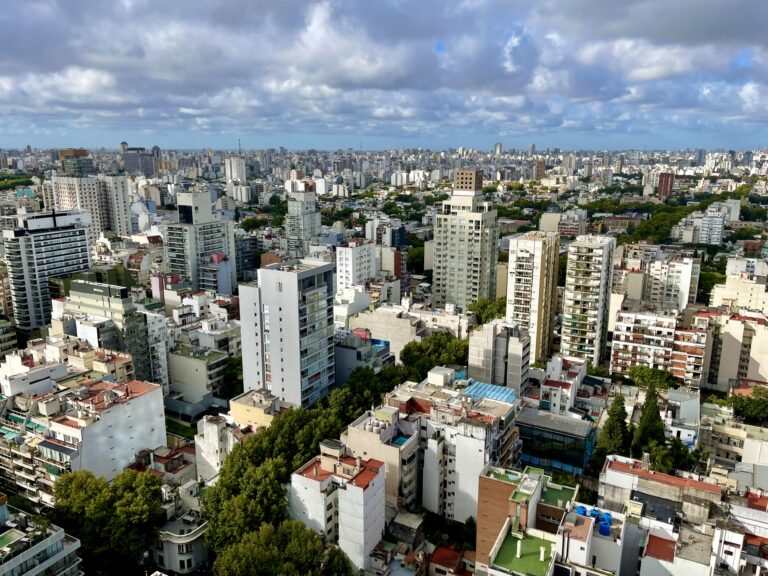
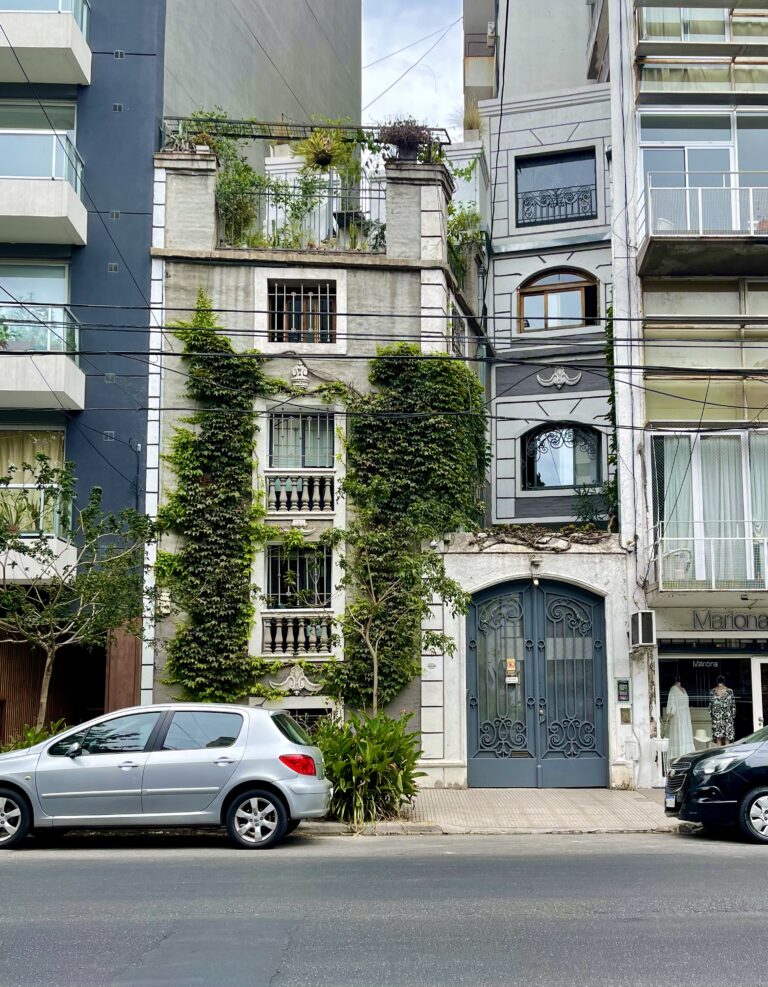
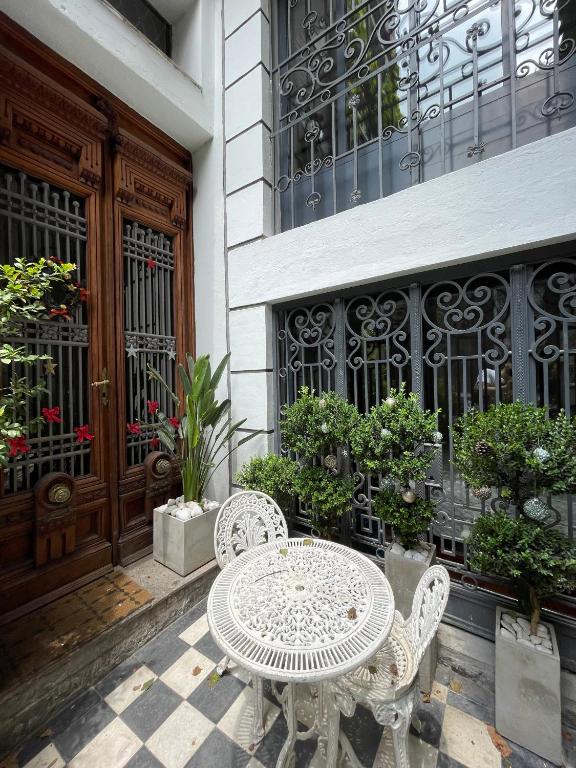
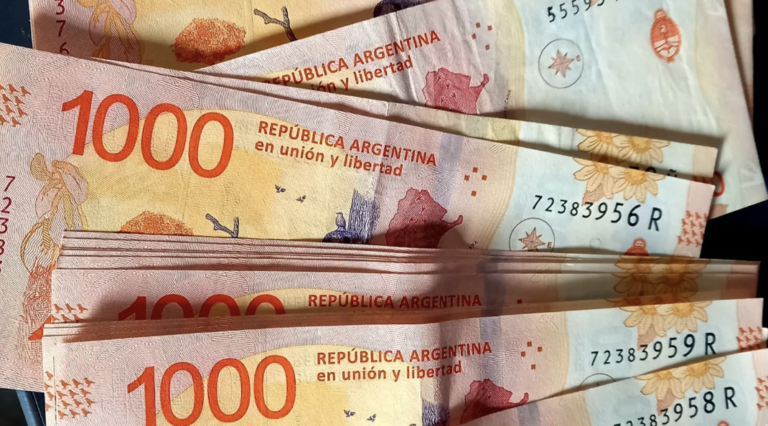
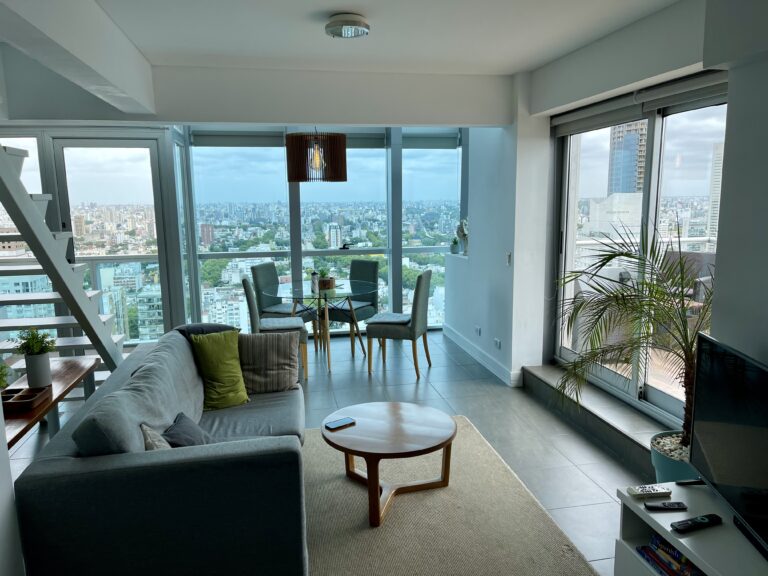
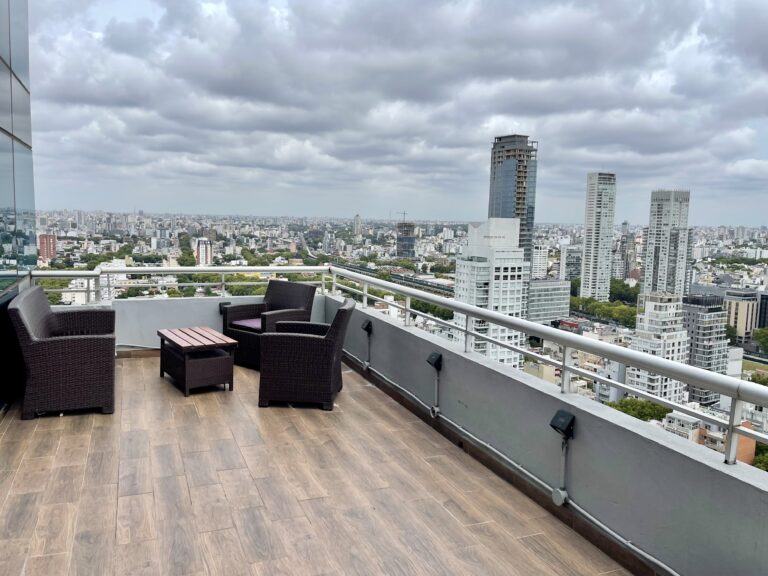
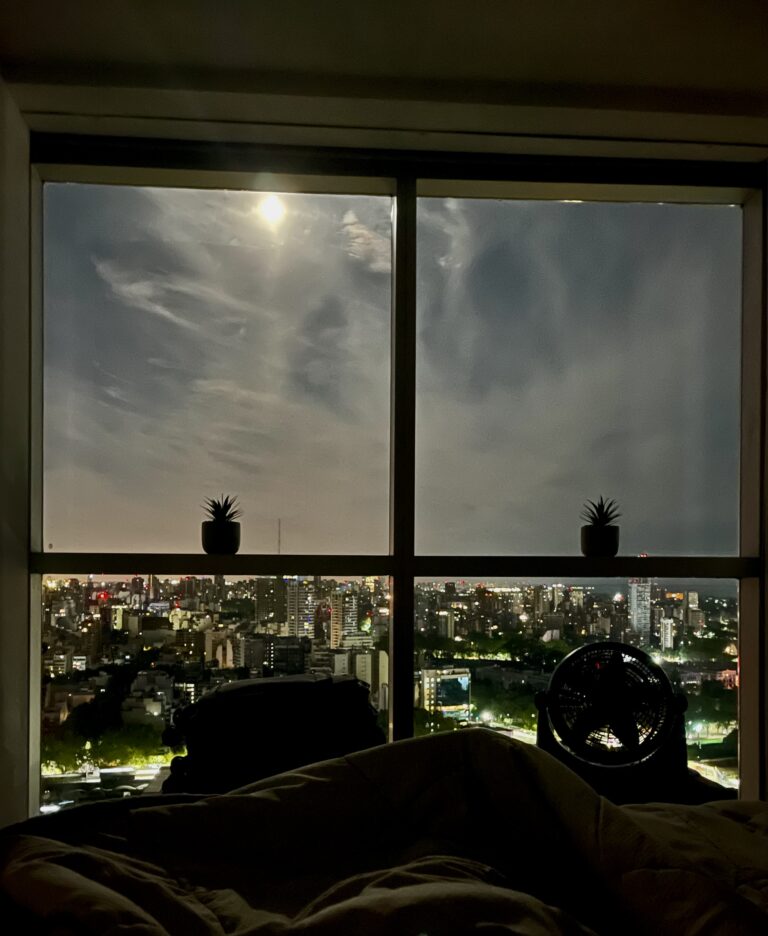
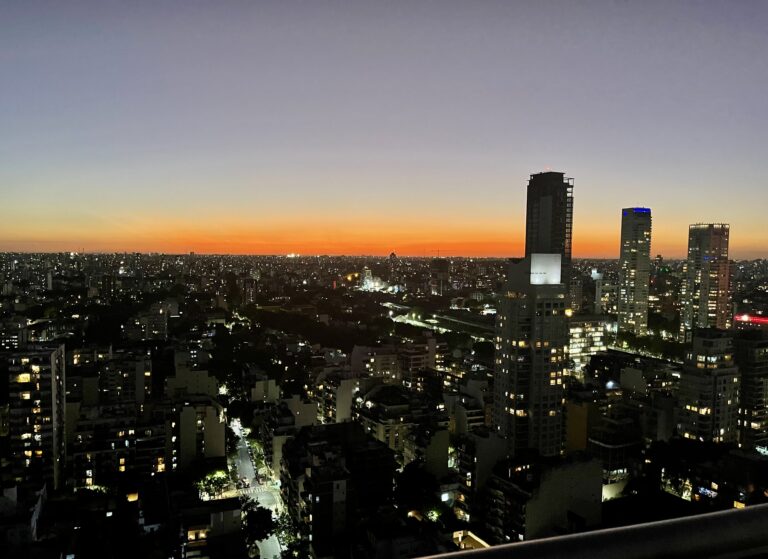
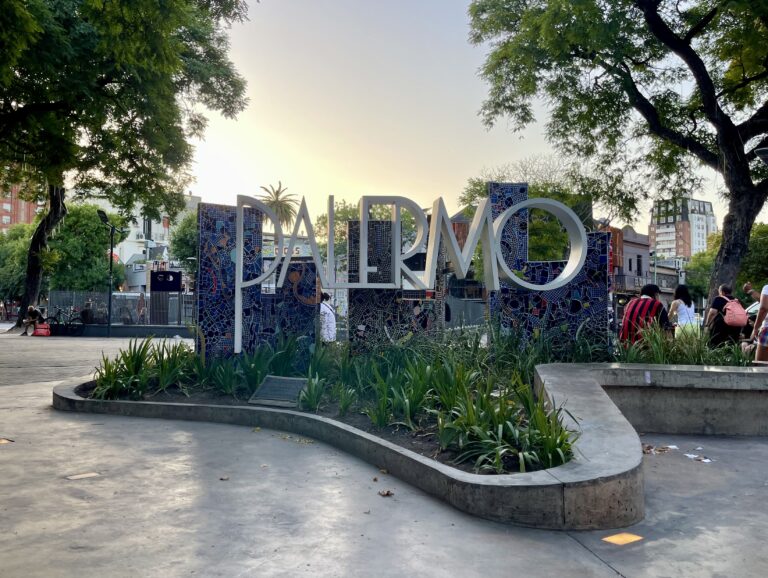
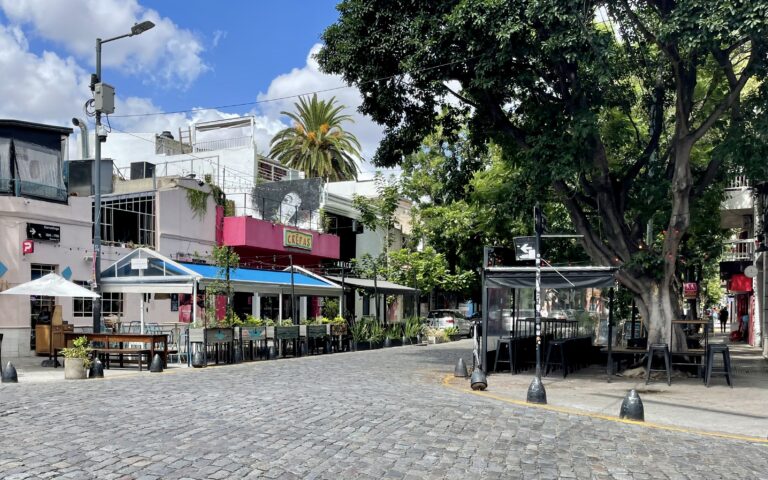
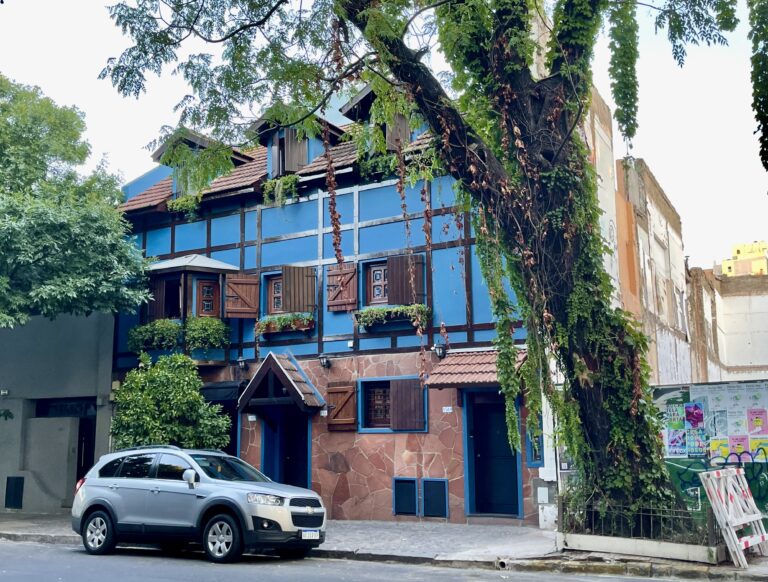
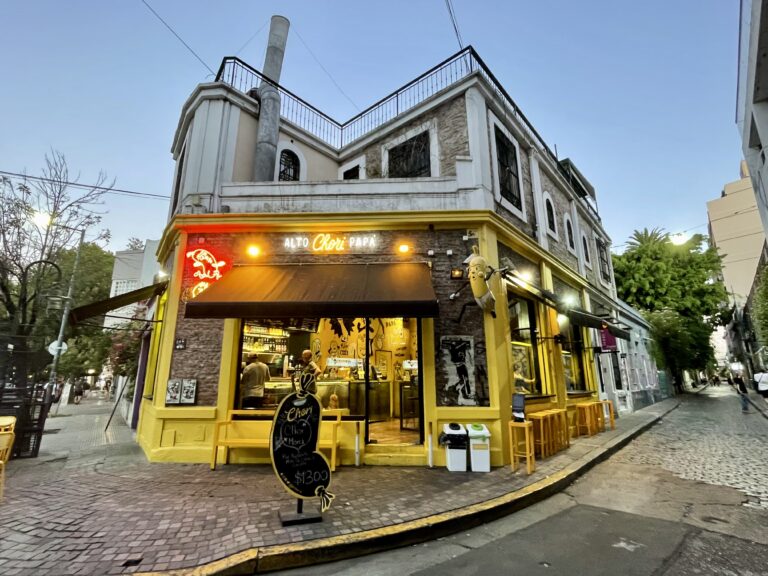
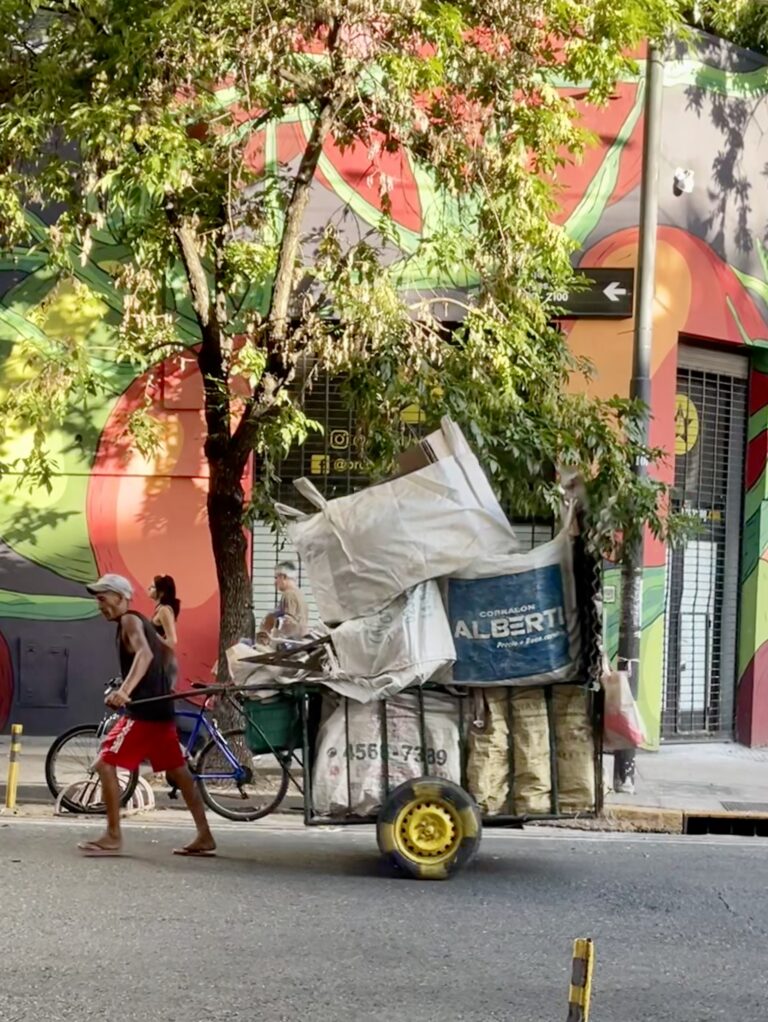
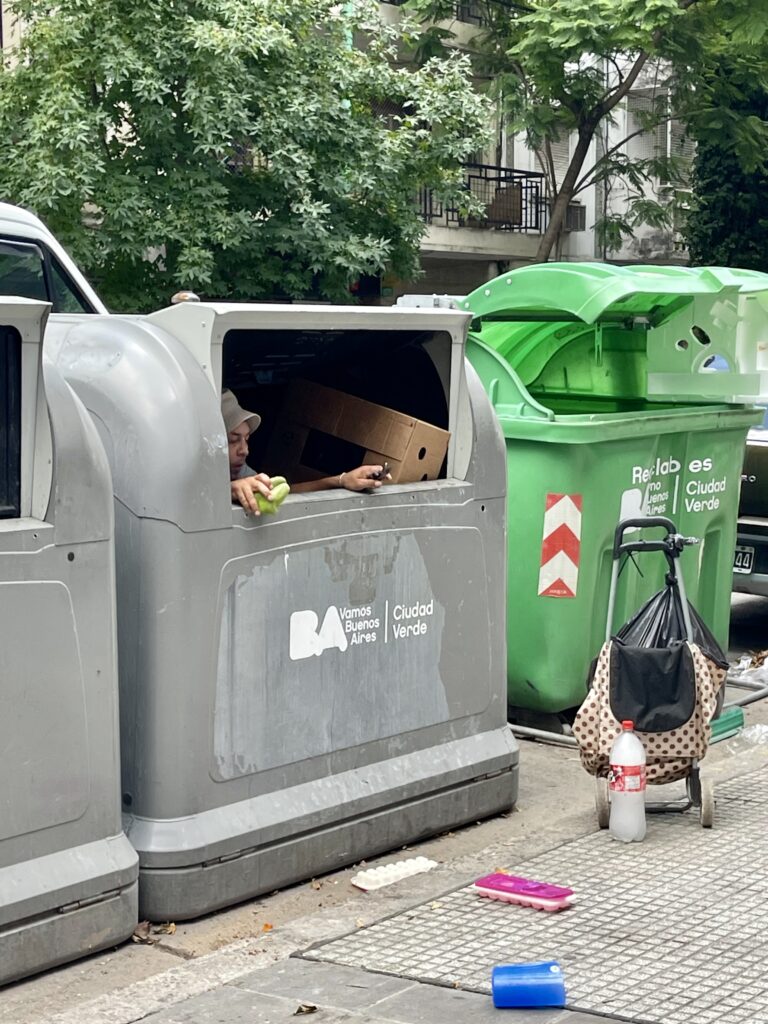
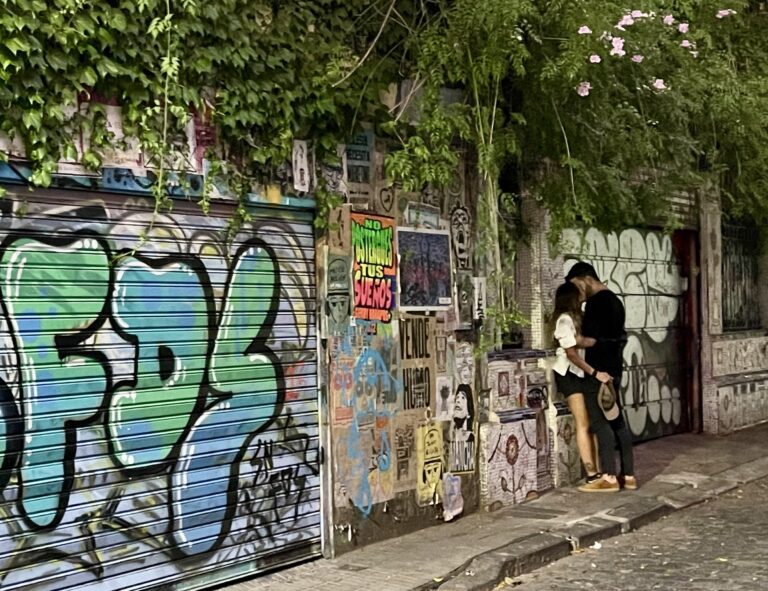
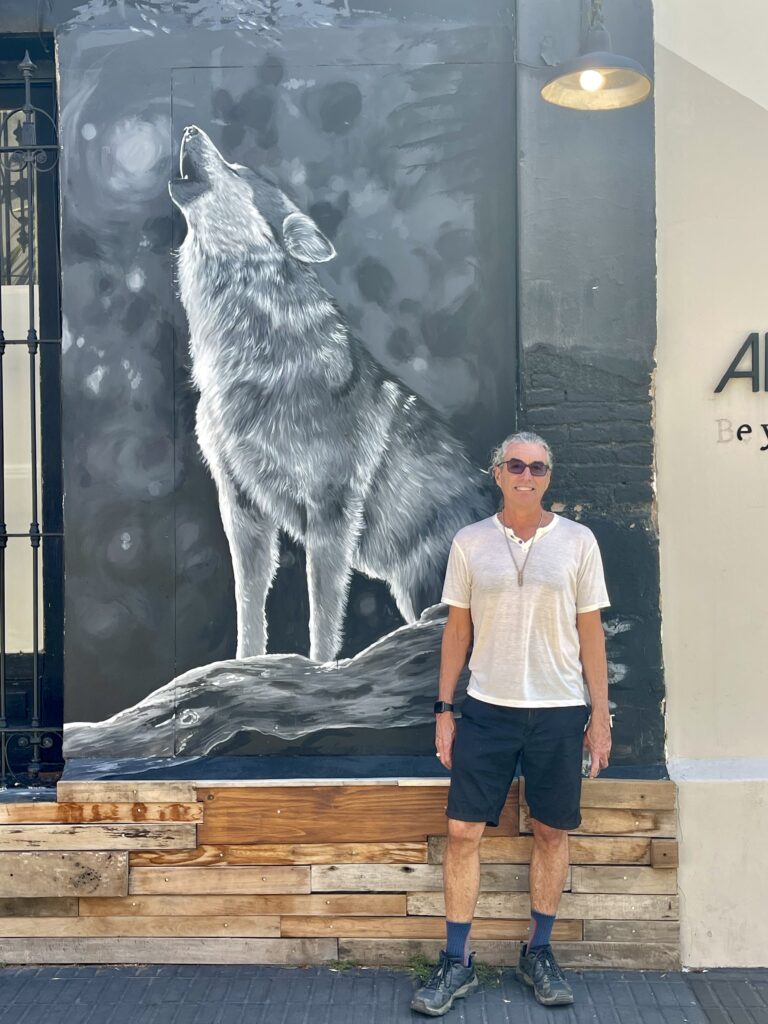
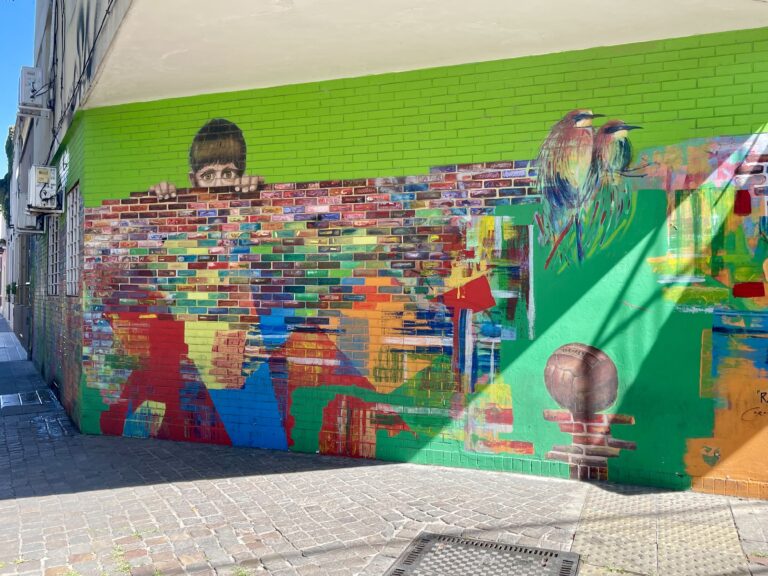
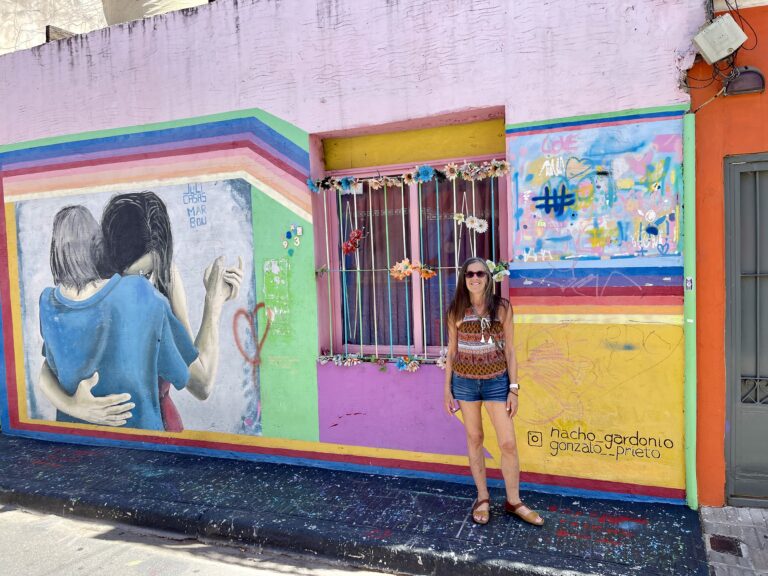
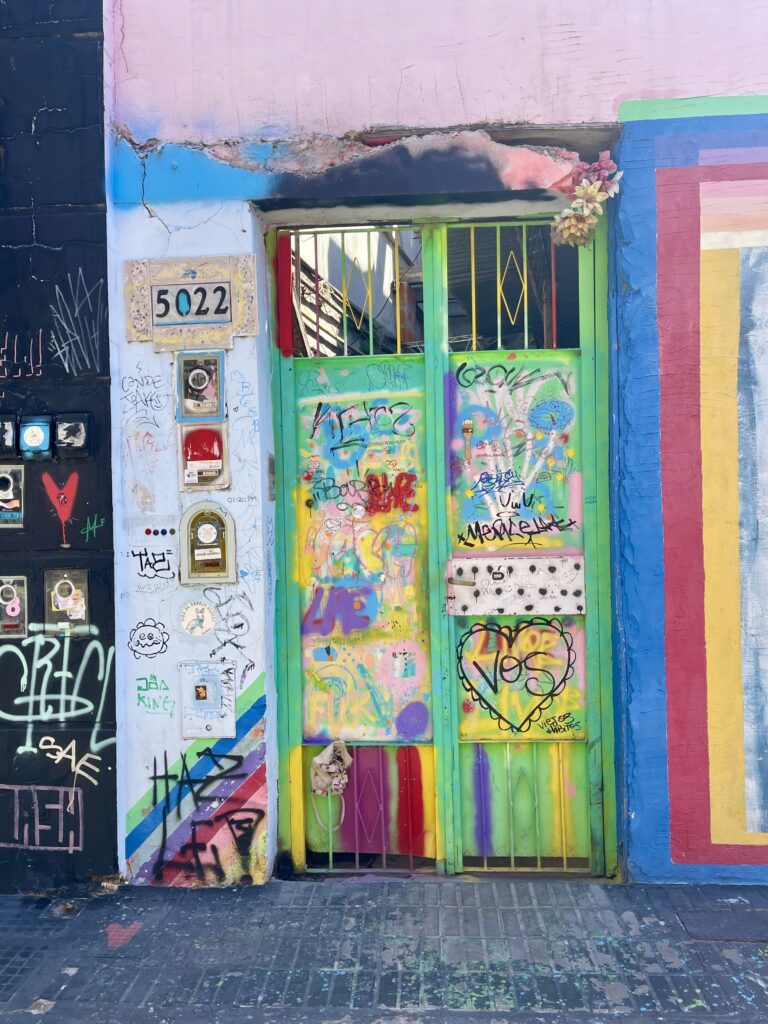
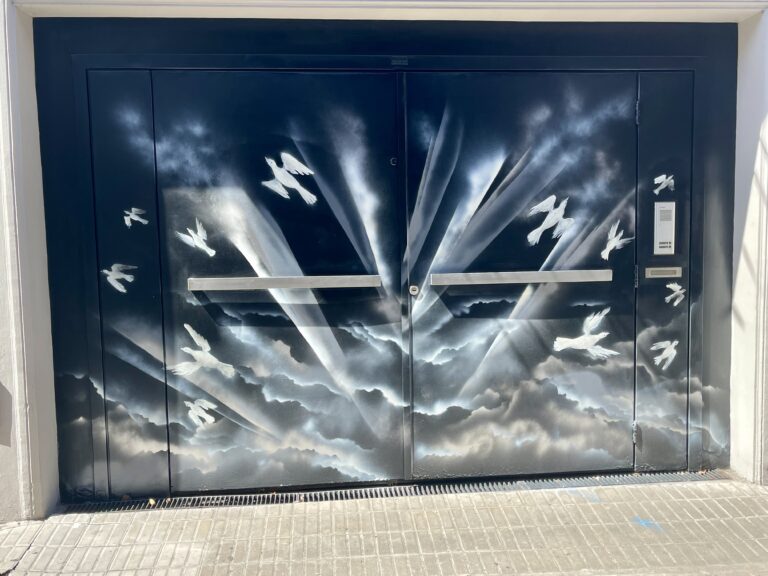
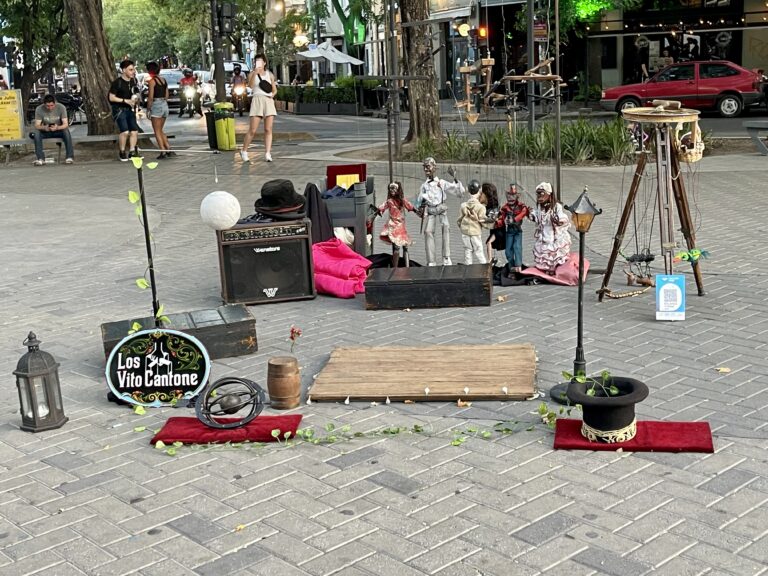
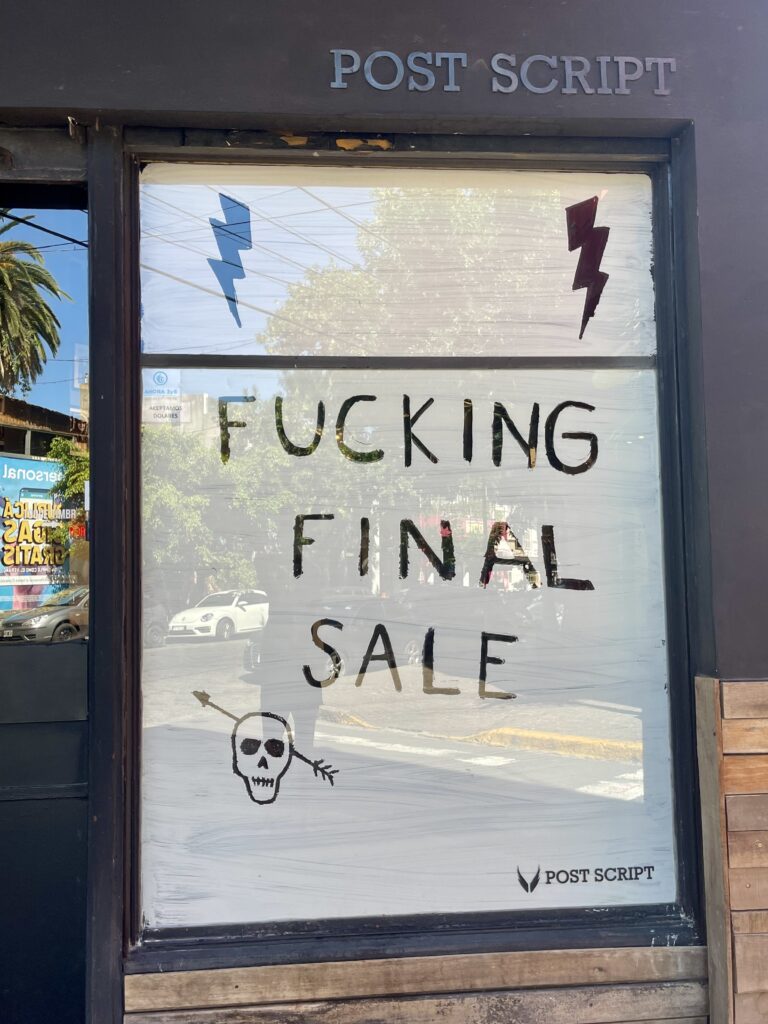
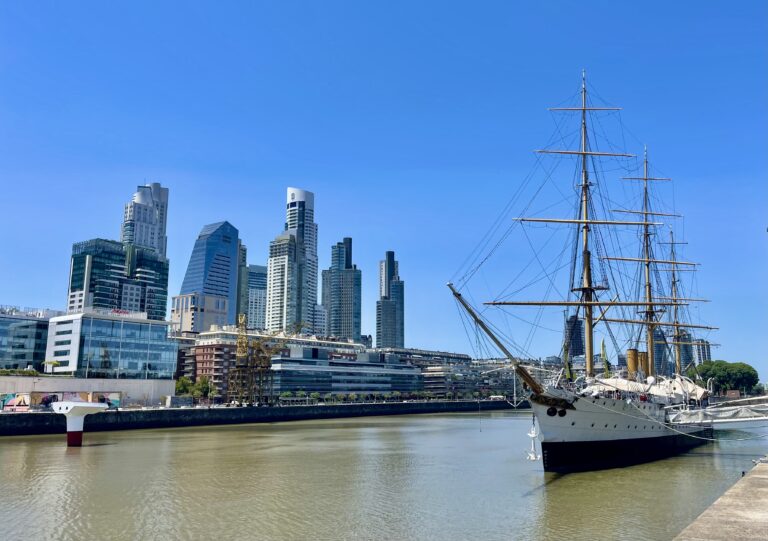
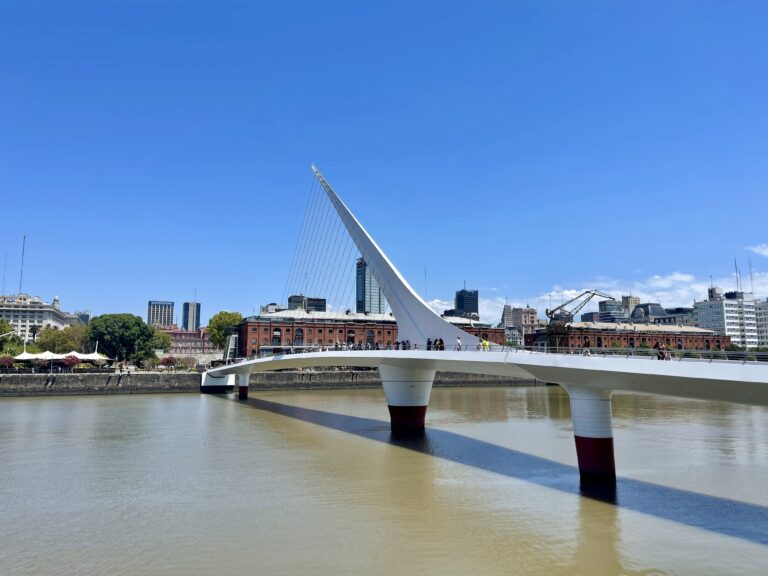
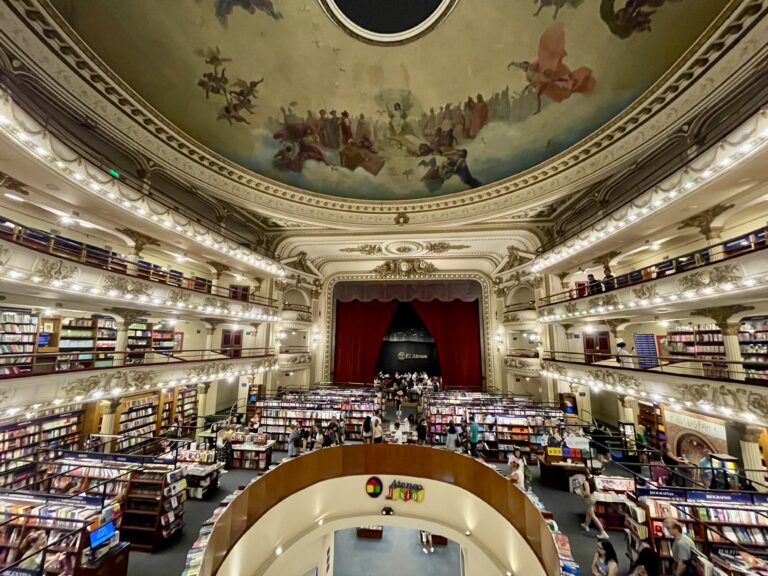
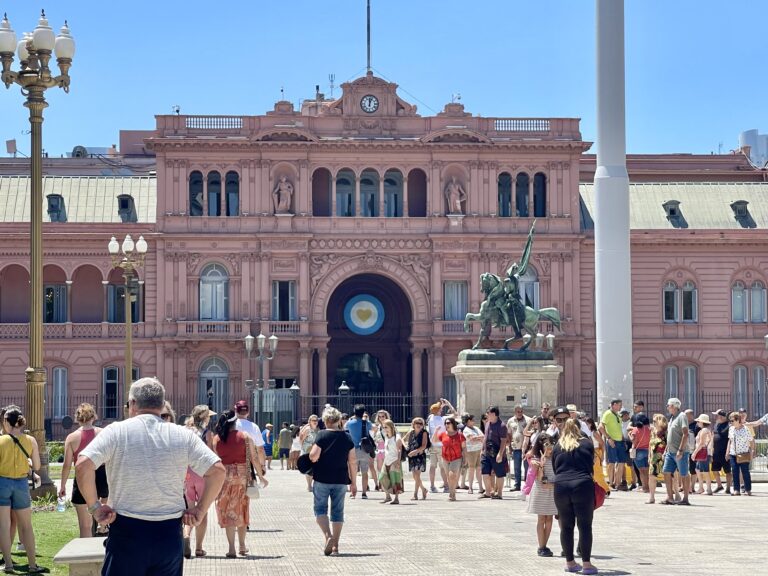
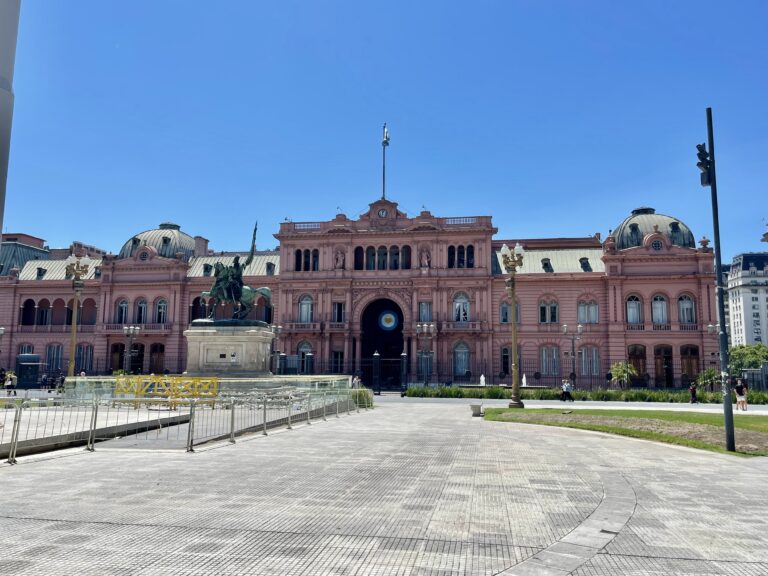
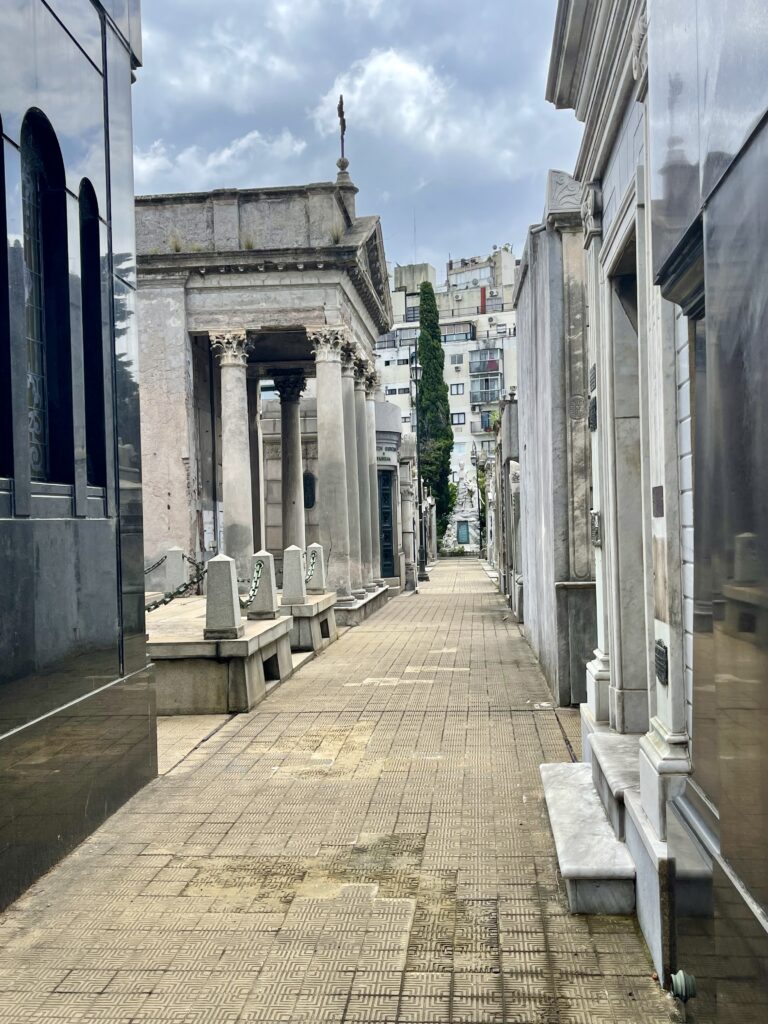
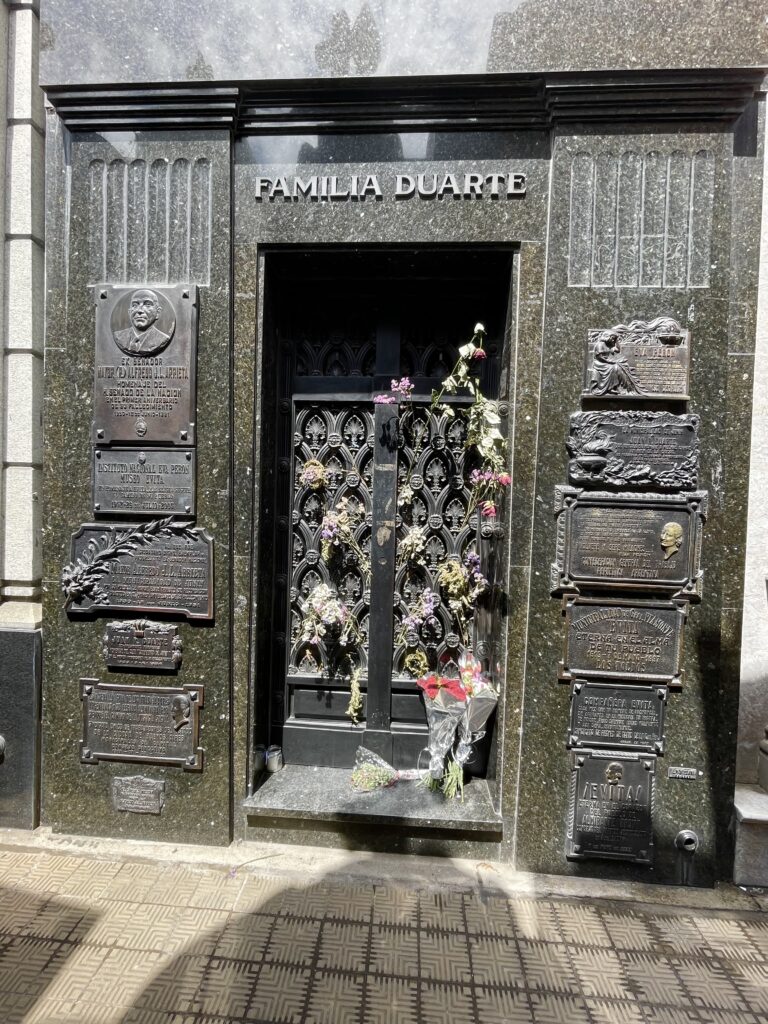
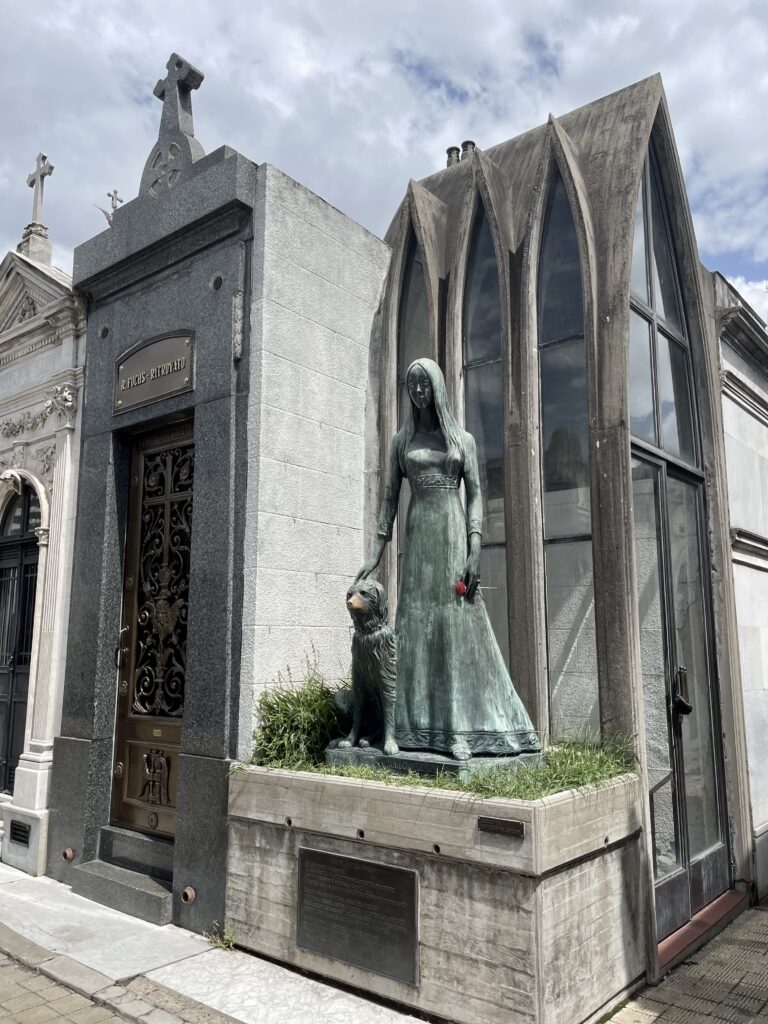
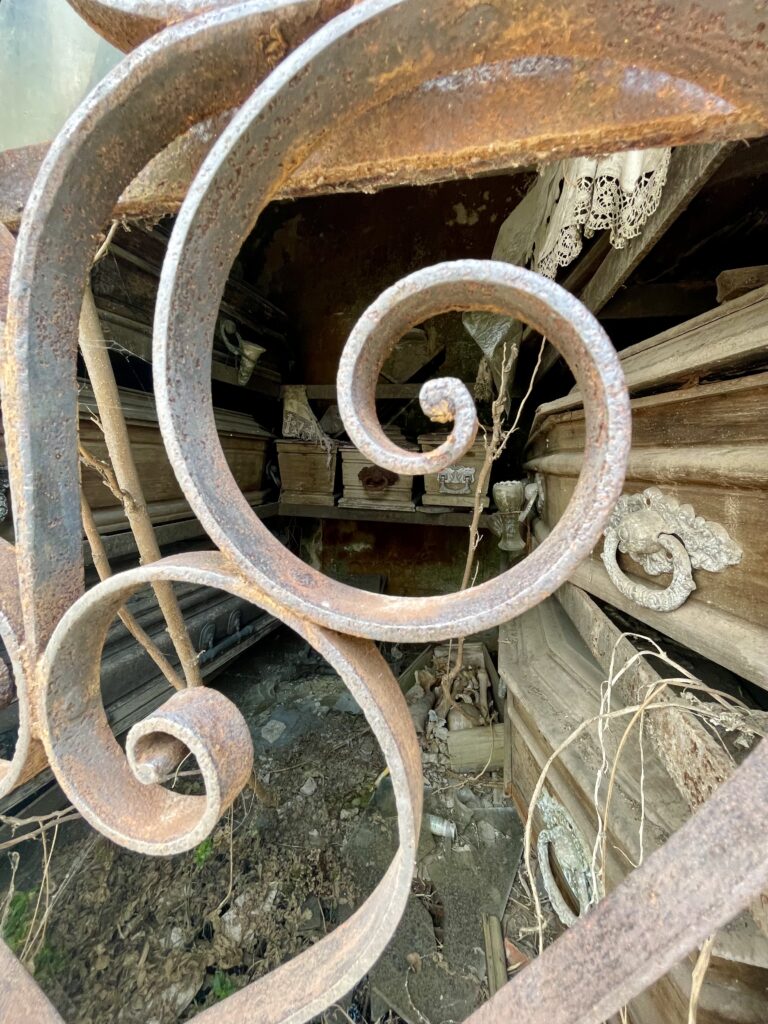
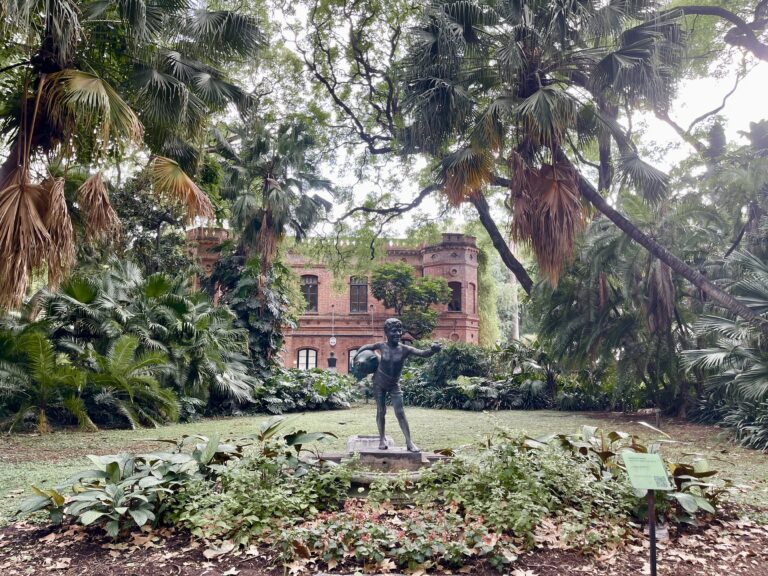
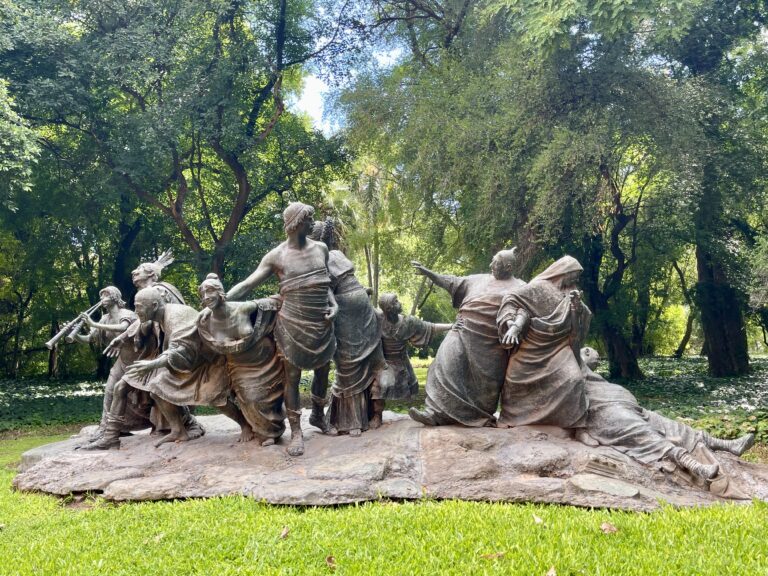
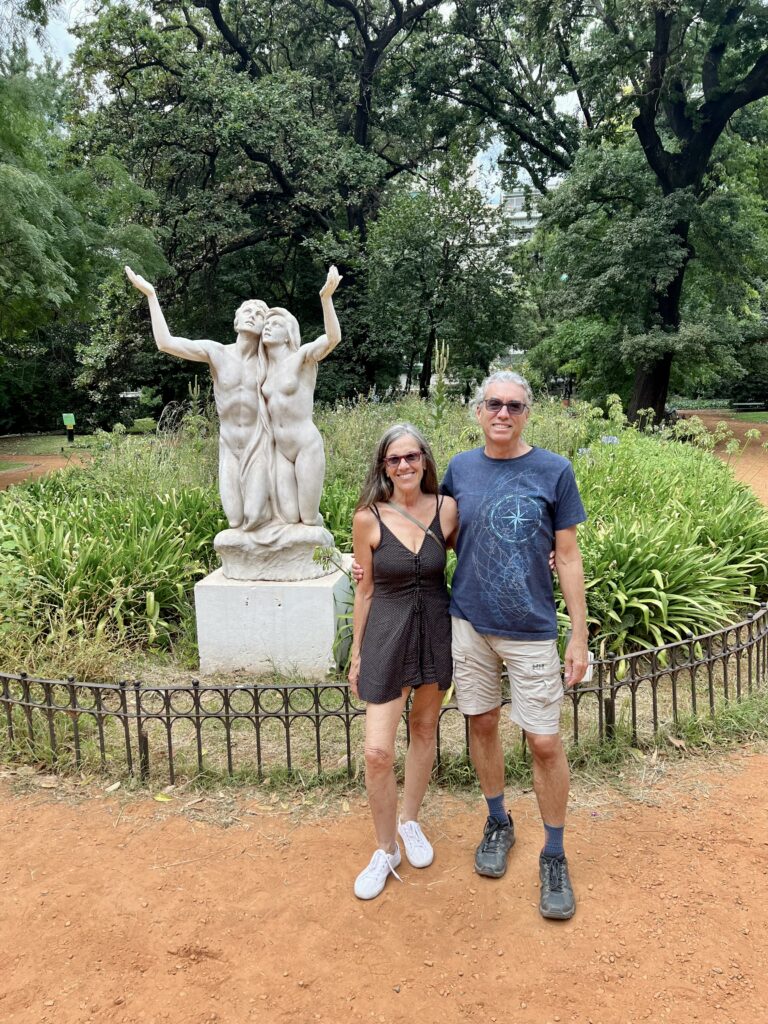
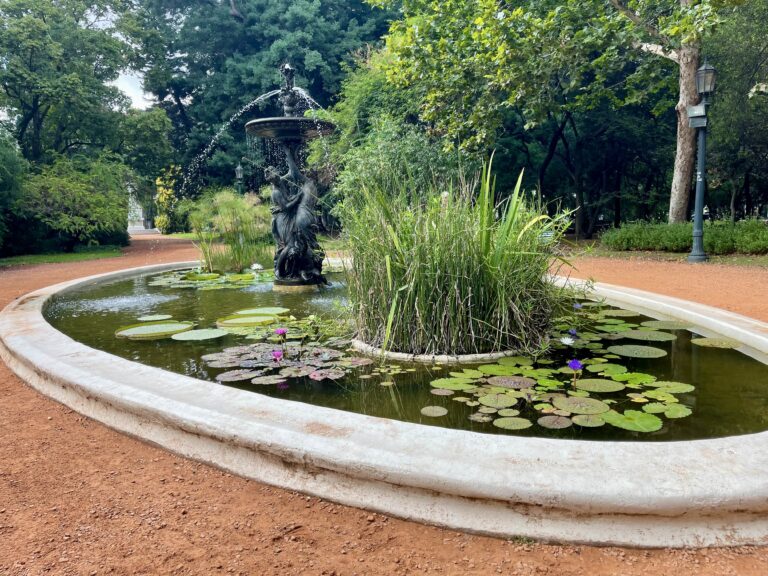
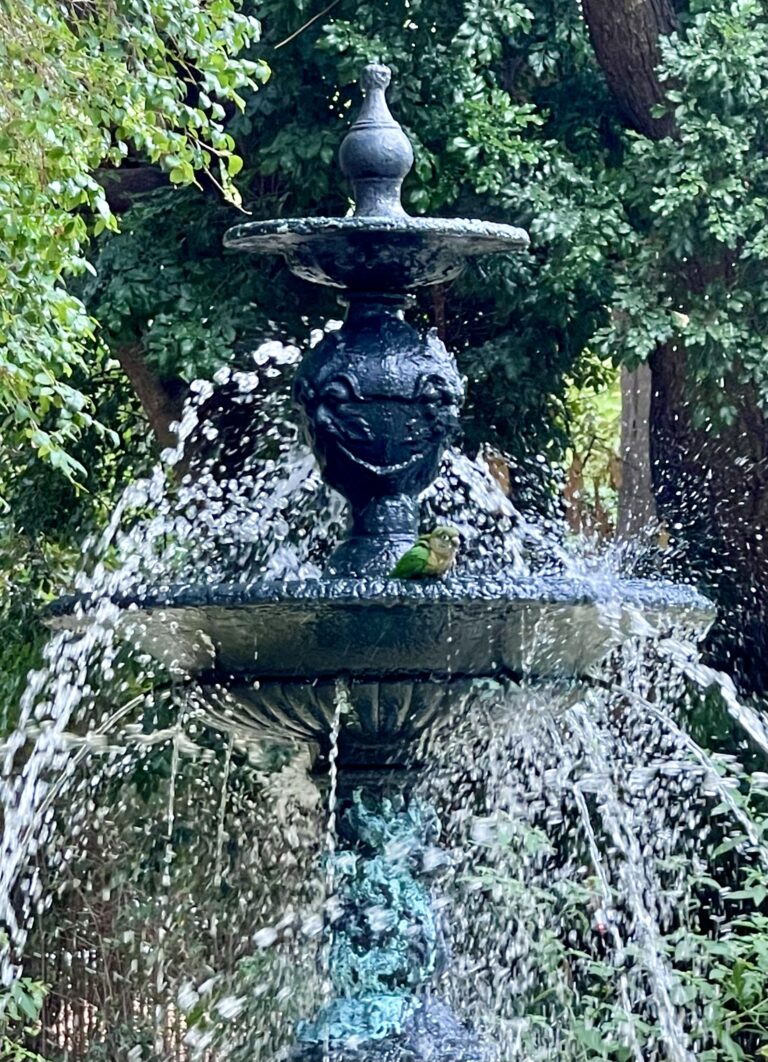
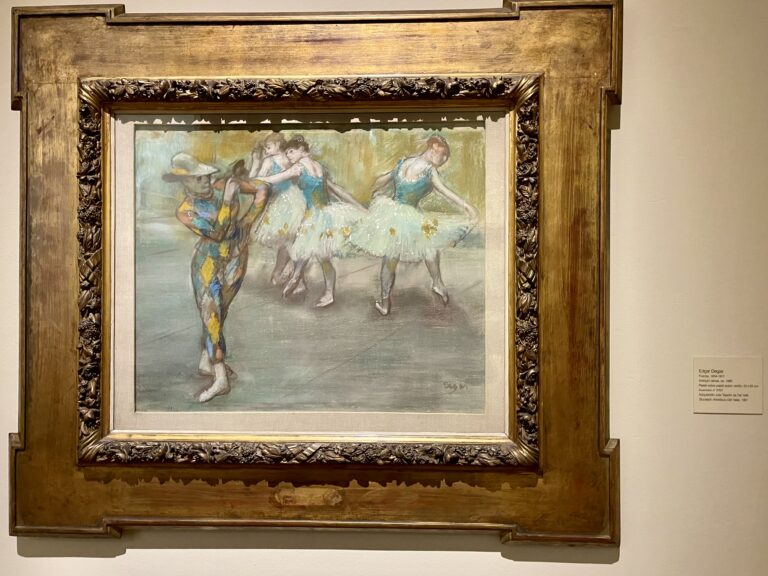
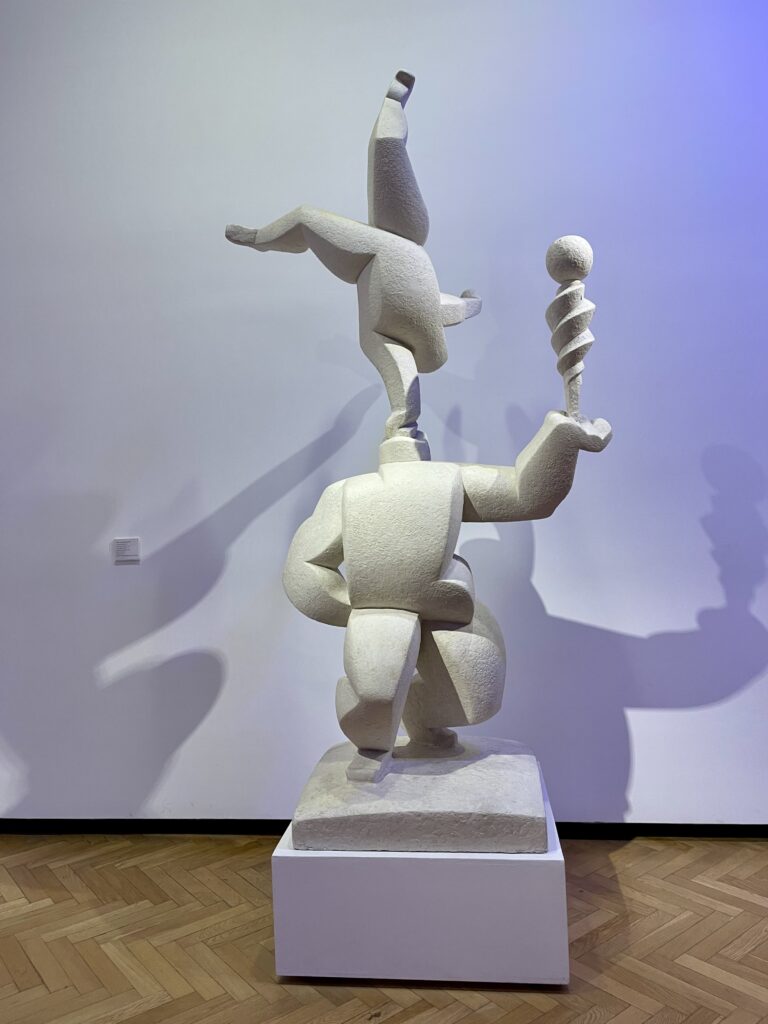
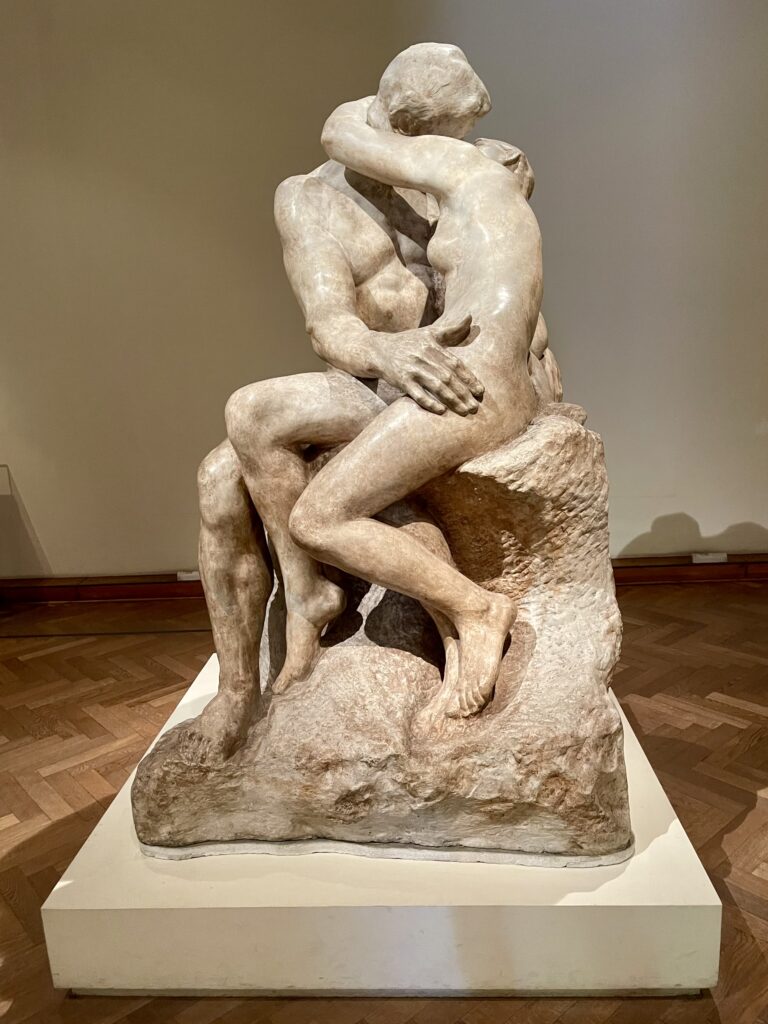
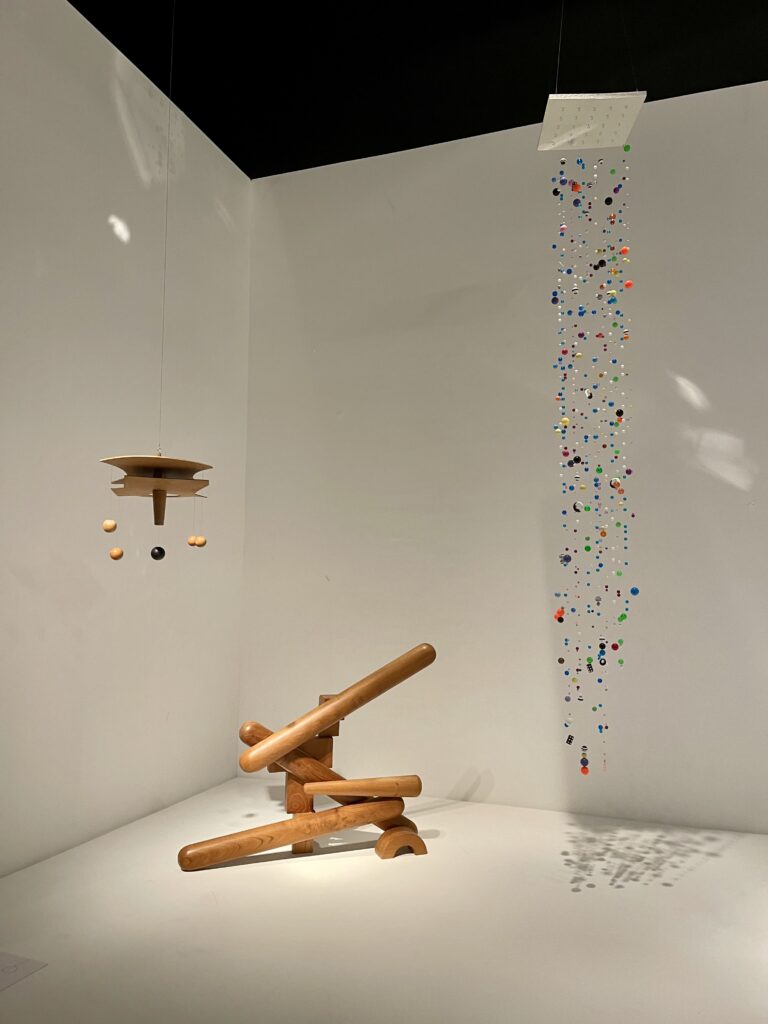
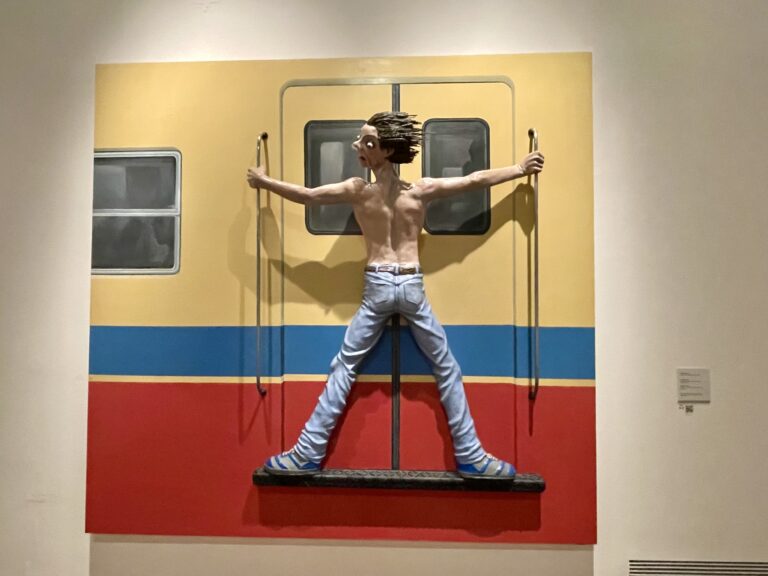
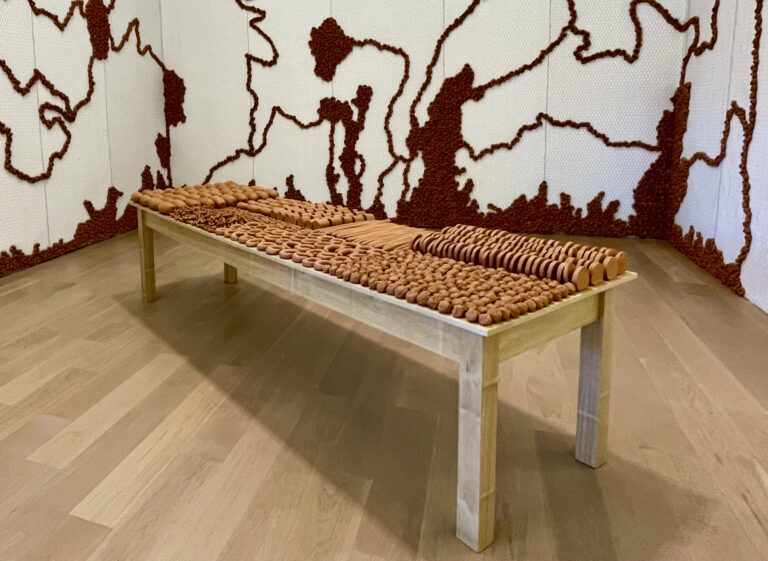
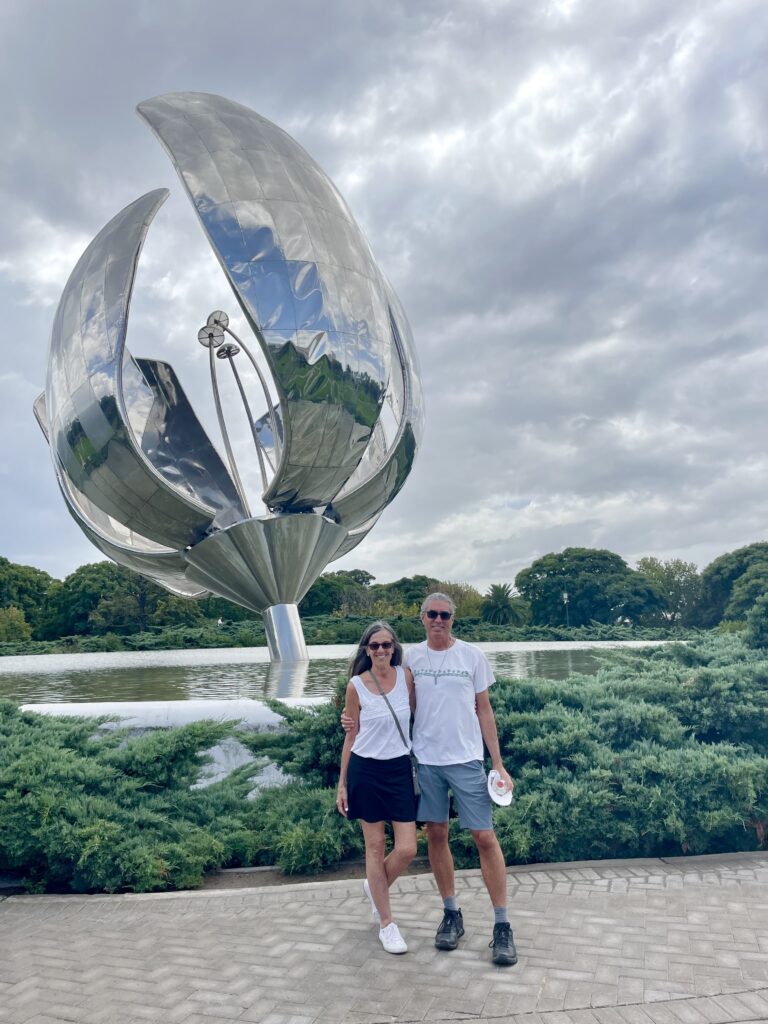
One Response
So much beauty, color, and character. And that bookstore. Holy moly!